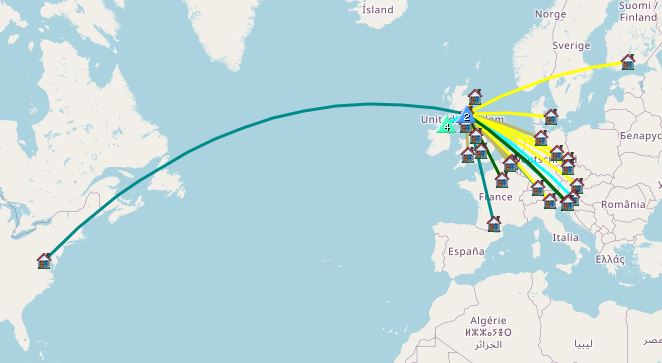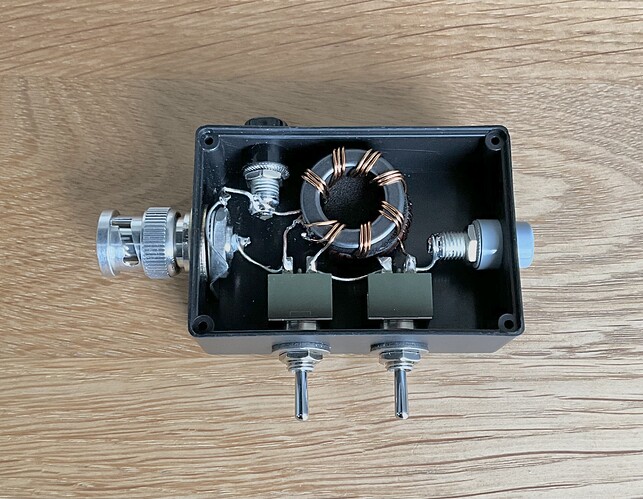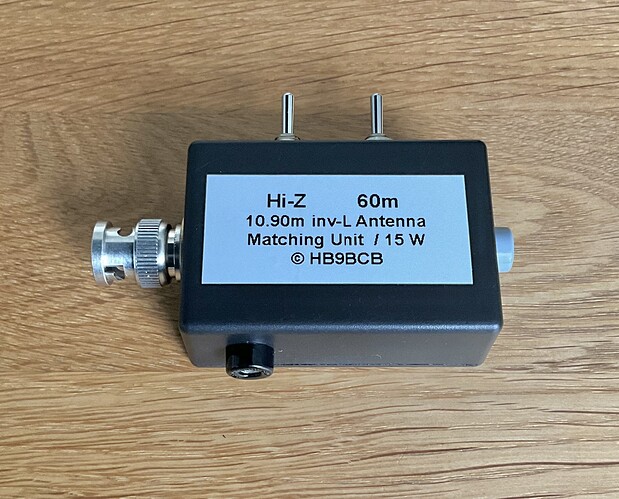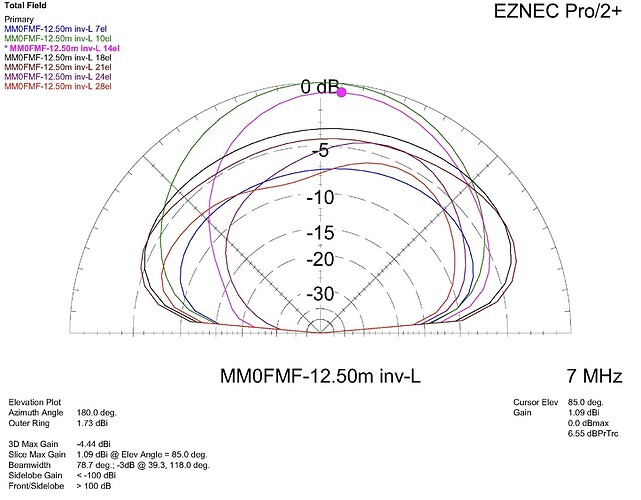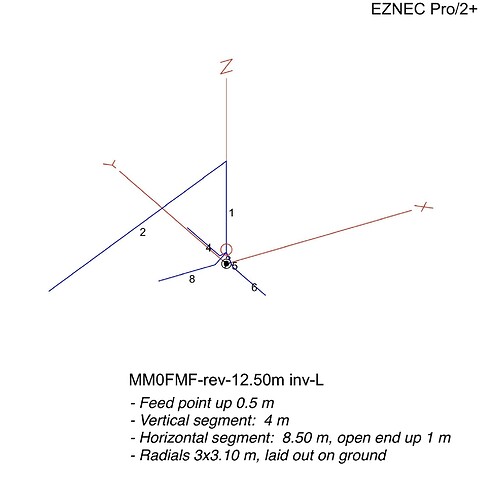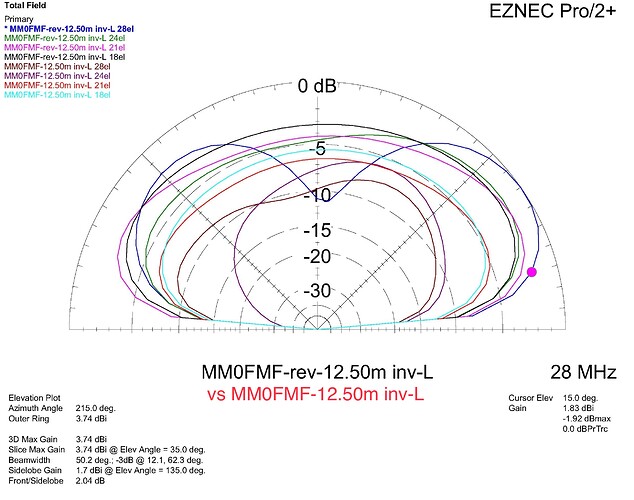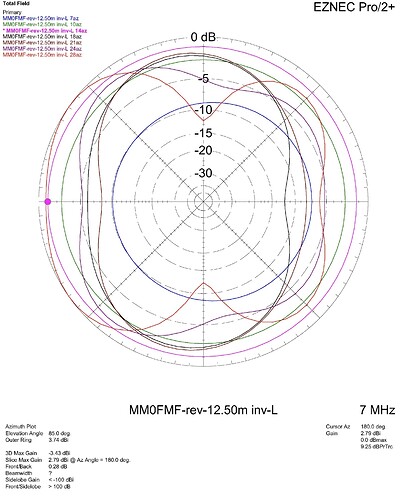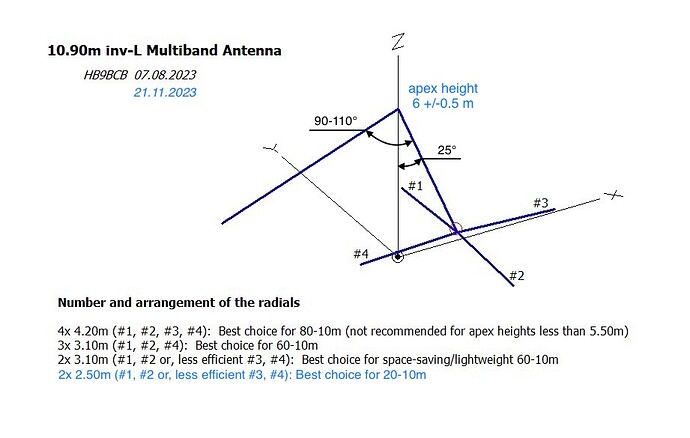Well the great thing about HF is there are an unlimited number of wire antennas that can be made for pennies. So I thought I’d try something new… a “random” 41ft wire with a 9:1 unun. OK the length is anything but random but 41ft is a good length with a 17ft counterpoise. Though enough time using metric measurements has resulted in 41ft being a meaningless number when it comes to length. So I worked out what 41 and 17 are in sensible units and then measured some wire. I had no idea if this antenna would be any good or not so the radiator and counterpoise are made from assorted lengths of “some yellow wire” with the pieces soldered together and insulated to make the lengths. Hey waste not want not. I made a double sided wire-winder out of a piece of estate agents sign as I am too tight to spend £3 on a commercial one. Mine was made from a piece of sign I collected for SOTA purposes after a storm in 2006… nearly all been used now. (Notes neighbour’s house is for sale… a possible source of a new piece of material ![]() )
)
Also you need a 9:1 unun. An FT 114-43 core offered itself up as did some 24guage enamelled wire and thus a 9 turn trifilar wound coil appeared and was wired up. Except despite being on the way to 65 I cannot count and wound 8 turns not 9 ![]() Anyway I applied a 470 ohm and 440 ohm (390+47) resistors in turn across the antenna connections and pumped it from the MFJ-259 and it said 1.2:1 up to 25 MHz and then 1.3:1 up to 30MHz. That seems to do what is needed.
Anyway I applied a 470 ohm and 440 ohm (390+47) resistors in turn across the antenna connections and pumped it from the MFJ-259 and it said 1.2:1 up to 25 MHz and then 1.3:1 up to 30MHz. That seems to do what is needed.
The WX has been dire… when I could go and play and dire when I had to work. Today was the first decent day (currently 80% blue sky, gentle but cold wind and 18C) so off to the testing grounds… GM/SS-125 Scald Law. Now not having been up a hill since 31st May I was expecting pish performance but 44mins to the trig was OK. Fewer people out than I expected and considering the rains we have had, the ground was very dry. Go figure!
Up went the antenna as a sloping inverted L, about 4m vertical from 50cms AGL then sloping down to a 1m pole. The counterpoise was laid on the ground underneath the radiator. I pointed the sloping section NE towards Sweden. I need to look at the expected pattern to see how it should be setup. Then a 2m piece of RG58 connected it to the KX2. First job measure the match: 7.035MHz 3.6:1, 10.118MHz 8.3:1 14.03MHz 3.5:1, 18.085MHz 2.1:1, 21.06MHz 2.5:1, 24.9MHz 4.3:1 & 28.058MHz 3.7:1 All those values are handled with trivial ease by the KX2 ATU. OK, so does it radiate?
28MHz CW GI0AZB on GI/SM-005 and IU2BZ.
21MHz CW S5, DL, W4GO (for ODX), F
10MHz CW ON, F, G, DL
7MHz SSB G, F, MM
14MHz CW DL, OK, OE, I, OZ, OH
18MHz CW F, S5, I
Things didn’t sound right as there was even less noise than usual on a KX2 but Deutscher Wetterdienst on 10.1008 was unbelievably loud… S9++++++++ and there was huge amounts on QSB but 20m and 17m seemed to be giving very loud signals from Europe unlike the HF bands 21/28.
So it seems to function but is it better than other antennas? I don’t know but it’s coming with me to F/DL next week for the FN rally and we shall see.
Anyway I packed up and drove home avoiding being hit by the drunk in a BMW X3 who pulled out of The Flotterstone Pub car park without waiting for the traffic to make space… fin de cloche!
When I got back I found I was testing my antenna during an M5 Flare, here’s the summary
Space Weather Message Code: SUMXM5
Serial Number: 235
Issue Time: 2024 Jun 23 1326 UTC
SUMMARY: X-ray Event exceeded M5
Begin Time: 2024 Jun 23 1251 UTC
Maximum Time: 2024 Jun 23 1301 UTC
End Time: 2024 Jun 23 1311 UTC
X-ray Class: M9.3
Location: S18E70
NOAA Scale: R2 - Moderate
That would explain the general malaise of the ionosphere.
So is the antenna any good? Here’s a map of some QSOs made around the time of the flare. You decide.
